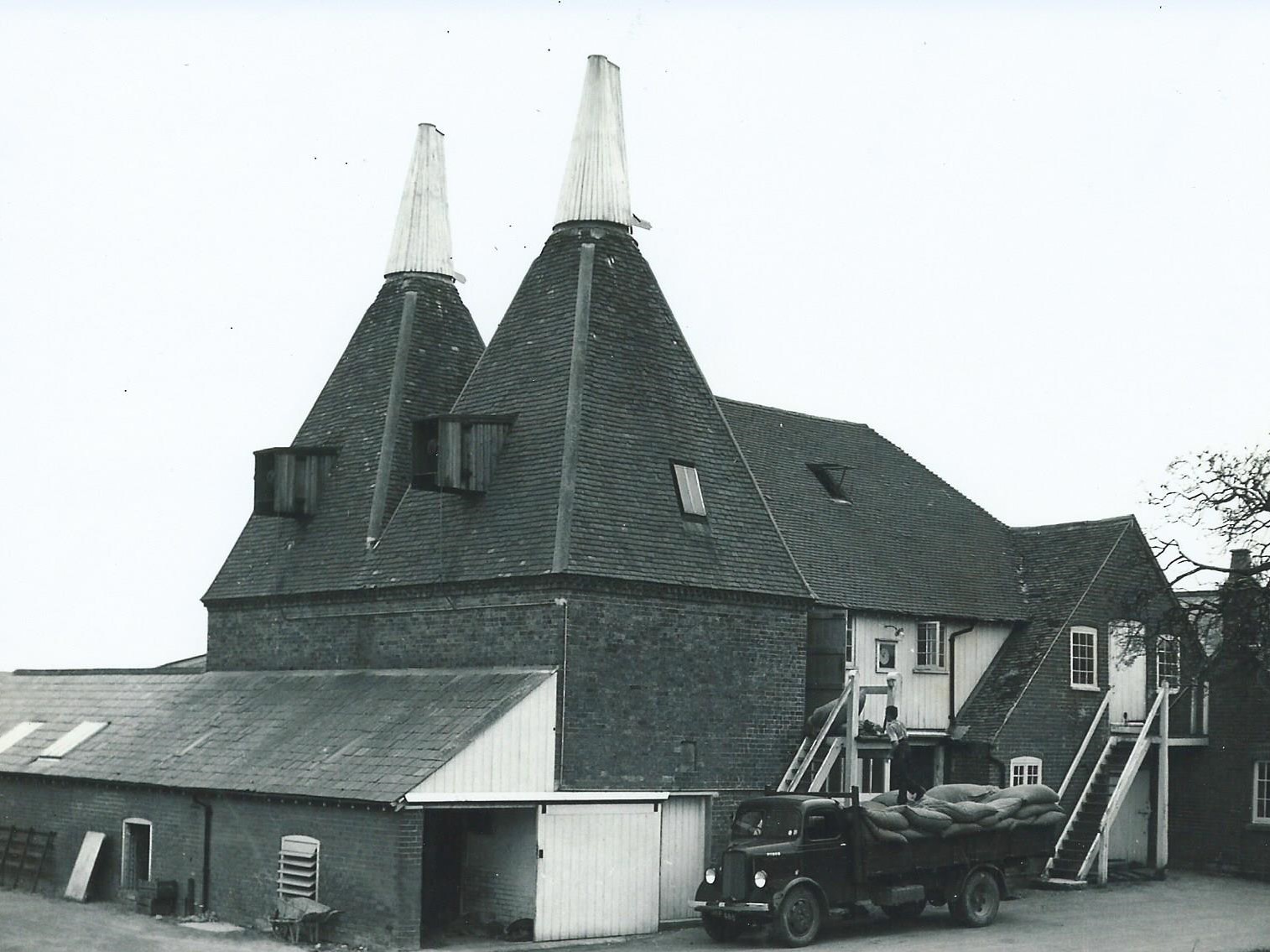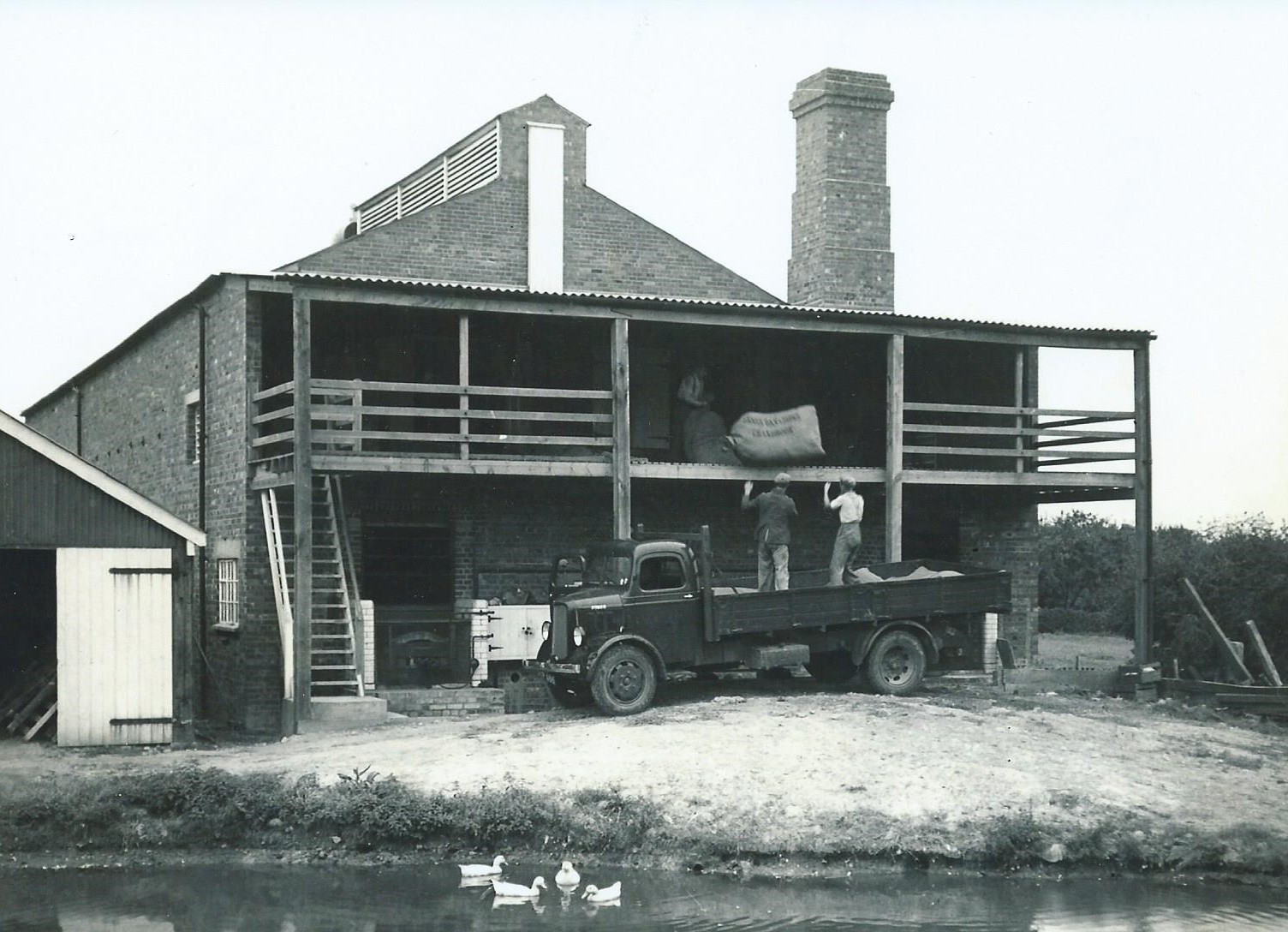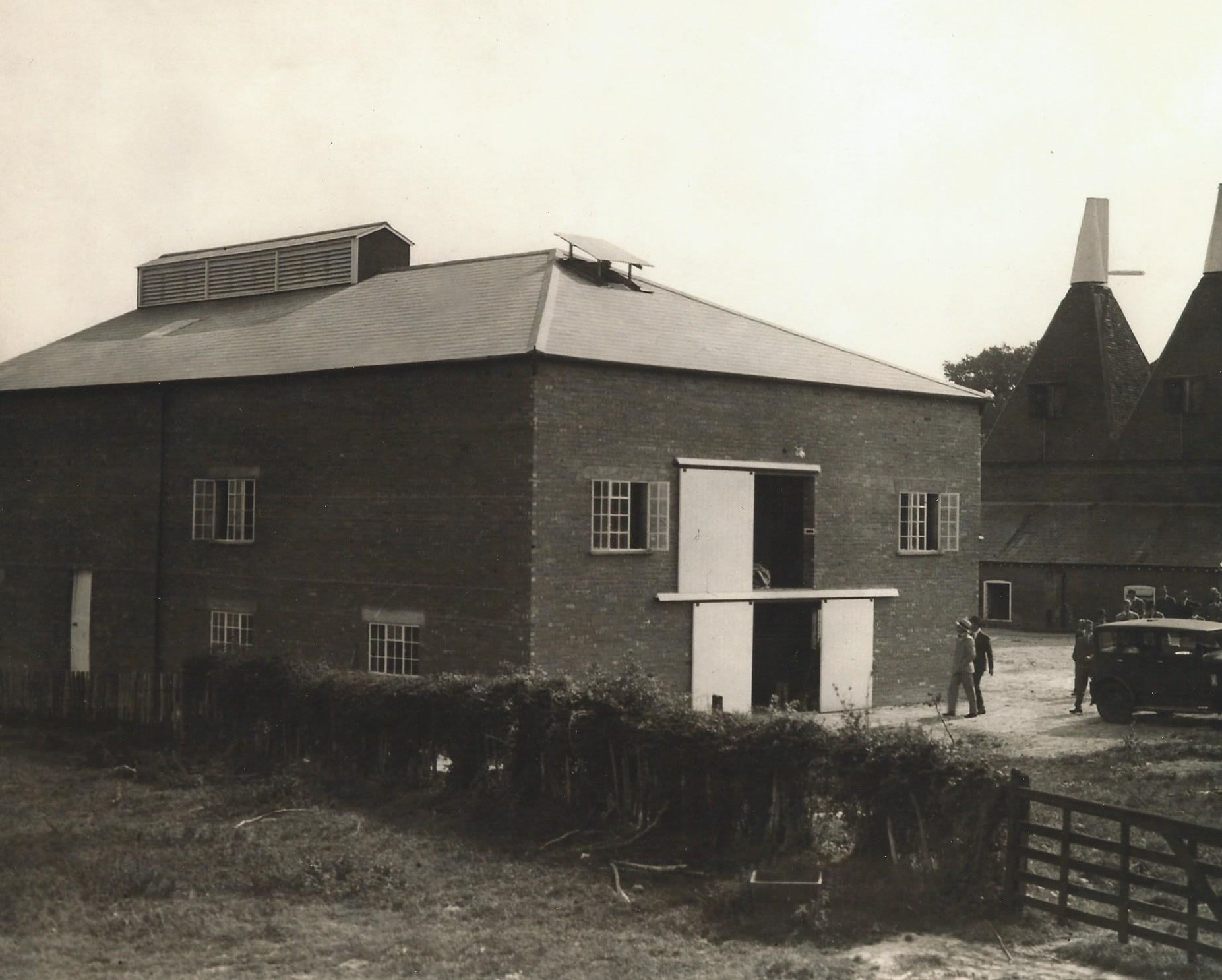
As with all the fantastic farms out there in the British Isles, there is a story to be told everywhere you look. We are very lucky that some of the history of the past 100 years at Paley Farm has been preserved in text and photographs.

As far as the information can take us, the farm was once predominantly fruit and hops. We have two oast houses: one being a Kentish-style, topped with two traditional cowls, and the other being personally designed by Mr Albert J Day, a previous owner of the farm. Rather than having the usual cowls, it is a rectangular brick building and was known as Day’s Patent Hop Dryer, and was featured in Market Grower & Salesman & Fruit Trader as well as Farmers Weekly in 1934. Both articles go into detail about how the pioneering design operates. The hot air is provided by steam-heated pipes, over which air is blown by 60-inch electric fans. The involvement of electricity and air shutters to create the correct circulation provided a great saving in expenditure on heating and was considered a great advance on the old method, which passed hot air up through the slatted floor upon which the hops are laid, and out through the cowl at the top. Paley’s two oast houses were in operation full time until the mid-1980s, when English hops were no longer viable as consumer tastes moved from bitter to lager and they were retired.
Mr Day stated that it took 1,000 pickers - men, women and children - to harvest the 60 acres of hop gardens over a two-week period. Half came from the East End of London and the other half were gypsies. The Londoners were housed in huts around the farm, while the gypsies stayed in caravans and tents.

Both articles also delve deeper into the farm’s operations. In 1934, there were 150 acres of fruit (apples, pears, plums, gooseberries, blackcurrants and loganberries) and 40 acres of arable land growing wheat and oats, with the remaining acreage in permanent pasture. There were eight miles of subterranean piping across the farm, providing the orchards with spraying facilities, run by two pumps in the yard. Although no longer operational, these are still in situ today.
Also mentioned were pigs, sheep and poultry. The sheep were Romneys, so perhaps they are distant relations to the ewes we have roaming the farm today.

Research with Historic England indicates that the original farmhouse was built in the 1550s next to the stream. An add-on barn, housing a couple of cows or horses, was later converted to a residential property. We also know that there was a water-driven corn mill next to the original farmhouse, but it disappears off the Ordnance Survey maps between 1898 and 1908. The current farmhouse dates back to the 1780s.
Looking into the history of Paley Farm has driven home the message that we must document as much as possible for the generations to come. We hope they will be as interested in the farm’s history as we are. Fortunately, technology has moved on since the 1900s and this should be easy enough to achieve – it’s just remembering to capture time as it flies by that is the tricky bit.